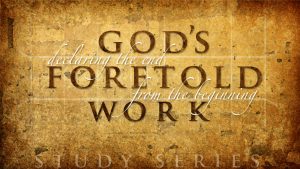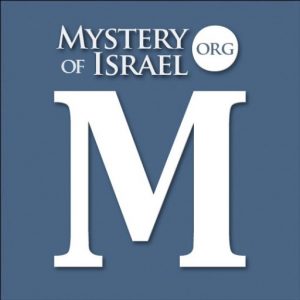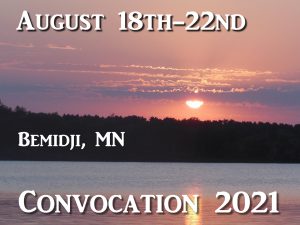I’ve struggled in my interpretation of this section about the “two witnesses” for a long time. My question is about the identity of the two witnesses. Corporate witnesses or individuals?
- It is written, “These are the two olive trees, and the two candlesticks standing before the God of the earth.” (Rev 11:4)
- And in Rev. 1:20 “…and the seven candlesticks which thou sawest are the seven churches.”
- Five of the seven Churches were rebuked and 2 were commended as “overcomers.”
- The beast “makes war with them” and “overcome them and kill them.” (Rev 11:7)
- They “tormented them that dwelt on the earth.” (Rev 11:10)
- They receive “power” for the last 3 ½ years. (Rev 11:3)
The identity of the two witnesses must take account of two important questions: 1) Their relationship to the rest of the body of Christ. 2) Their relationship to Jerusalem.
The relationship of the witnesses to the greater body of Christ raises the question of the time of the rapture. Most, who are not pre-tribulational in their view of the rapture, will agree that Paul’s “last trump” (1Cor 15:52), and Jesus’ “great sound of a trumpet” (Isa 27:13; Mt 24:31) are rightly identified with the seventh trumpet (Rev 10:7; 11:15, 18; see my article, “The Rapture Question Decisively Answered by the Timing of the Day of the Lord”).
A comparison of Rev 8:12-13 with Rev 11:13-15 will show that the three woes are also the last three trumpets. The public ascension of the two witnesses takes place at the time of the second woe, which is also the sixth trumpet (Rev 11:12-14). At this point Christ has not yet returned. The announcement of the imminence of the third woe is followed by the sounding of the seventh trumpet, which finishes the mystery of God with Christ’s return to raise the dead and judge the nations (Rev 10:7; 11:14-15, 18).
If the two witnesses are not individuals, but represent a much larger number, it is certain that their resurrection and ascension precedes Christ’s return at the seventh trumpet. This raises the question of why this larger number would be taken up such a short time before the return of Christ to gather the rest of His elect “immediately after the tribulation of those days” (Mt 24:29-31).
It is one thing if the two witnesses are raised before the rest of the church if they are two single individuals, but if they symbolically represent two distinct companies within the greater body of Christ, then we will be interested to understand why they should be raised to ascend sometime before the rest of the church is raised. What sets them apart?
The usual answer is that they represent a special remnant within the larger church that have a special assignment of some kind, and that their distinction from the rest of the body is based on a special degree of personal sanctification. Viewed as a corporate company, or two distinct companies, the two witnesses are typically seen as a special class of ‘over-comers’ that should be distinguished from the rest of the church. For me, this raises a critical question. What about Paul?
Certainly, the tremendous events of the tribulation will deeply refine the church, so that she will be prepared for the climatic event of the rapture, not only as to time, but as to faith. Those days will have a way of making one an ‘over-comer’, or else a lack of true root will be exposed in the multitudes that will fall away.
I realize there are some doctrines out there that suggest that Paul was personally in doubt as to whether he would attain to the first resurrection. I think this is to misunderstand Paul’s use of terms.
In view of Paul’s understanding of the potential power of Christ’s resurrection in the present life of the believer, it is not likely that he is speaking only of the resurrection at the ‘last day’. His language is inclusive of all resurrection, but the focus of the context is on the deeper apprehension of the power of Christ’s resurrected life in the present life of faith (Phil 3:9-12).
We see an example of this desire in first chapter of Philippians. There, Paul entreats the prayers of the church that Christ might be the more fully magnified now in his present mortal body (Phil 1:19-20). To this end, Paul would continually press towards the prize of the high calling of God in Christ Jesus (Phil 3:14). For Paul, terms like salvation and resurrection are not restricted to initial regeneration or to resurrection at the last day, but to the greater magnification of Christ in his body, whether it be by life or by death (Phil 1:19-21).
Moreover, if we make the first resurrection a matter of higher sanctification, such as to put Paul’s own attainment in question, we must explain how he could so confidently assure average believers that they would see their loved ones that had fallen to sleep in Christ? (see 1Thes 4:13-14, 17-18).
I believe this teaching tends to confuse reward with inheritance and divides the body along lines that undermine the Lord’s own view of His body in its essential corporate nature. Taken together, 1Cor 15:23, 52 with 1Thes 4:14 makes clear that “all” (not just some) who belong to Christ, and “all” (not just some) who sleep in Jesus, have a common share in the “blessed hope” of the church (Tit 2:13). This is much to be distinguished from the issue of reward and rule.
The bride will indeed make herself ready in terms of final sanctification. That is one of the purposes that will be accomplished in the coming tribulation. But when we speak of the over-comer church, we need to remember that in the book of Revelation, the over-comers are those who have gotten the victory over the beast and his mark, so that the church that endures to the return of Christ is by definition an overcoming church. The only alternative is final and irreversible reprobation.
In the context of the book of Revelation, those that overcome are the saved and those that do not overcome are the lost.
The second question that bears on the identity of the two witnesses is their relationship to the city of Jerusalem. An examination of the context will demonstrate that the city cannot be spiritualized to stand for a ubiquitous and universal Zion of God. Both it and the judgments associated with it are plainly localized. This implies that two literal persons literally lie in the literal city until they are raised up in the sight of their enemies. If this can be spiritualized, then everything the prophets and Jesus say concerning Jerusalem’s fate in relation to the day of the Lord can be equally spiritualized.
Finally, who are these two literal persons? I can’t prove it, but I believe their ministries significantly parallel the things that are recorded of Moses and Elijah. I take the view that this speaks of an Elijah and Moses anointing, not the literal return of Moses and Elijah, much the same way that Jesus sees John the Baptist as a fulfillment of the pre-day of the Lord return of Elijah in terms of ‘the spirit and power of Elijah.
The two witnesses of the tribulation are raised up to ‘finish the house’ (Zech 4:9) by emptying out of themselves (Christ within them) the golden oil that is piped into the seven lamped candlestick. Significantly, we see the holy Menorah in the Revelation, as symbolic of the seven churches.
Notice also that in Zech 4:14, the two witnesses are called, “the two sons of oil who stand by the Lord of the whole earth.” This further suggests that it is Moses and Elijah that form the background for the ministry of the two witnesses, since they are the ones who were seen ‘standing by the Lord of the whole earth” on the holy mount.
The literalness of an event does not diminish its symbolic value, because certainly, the choice of Moses and Elijah is intended enforce the recognition that the combined witness of the Law and the prophets all testify to the revelation of Christ’s glory.
Grace to you, Reggie
[This recent exchange added to what Reggie has written previously on the “two witnesses” spoken of in Revelation 11. See the article from several years ago here.]




